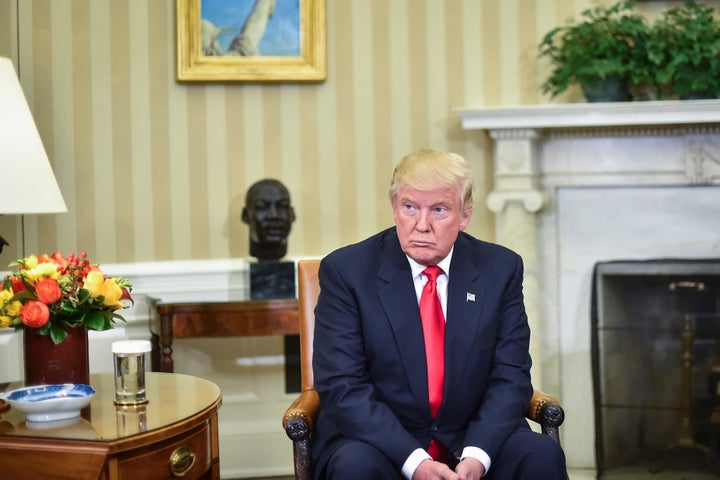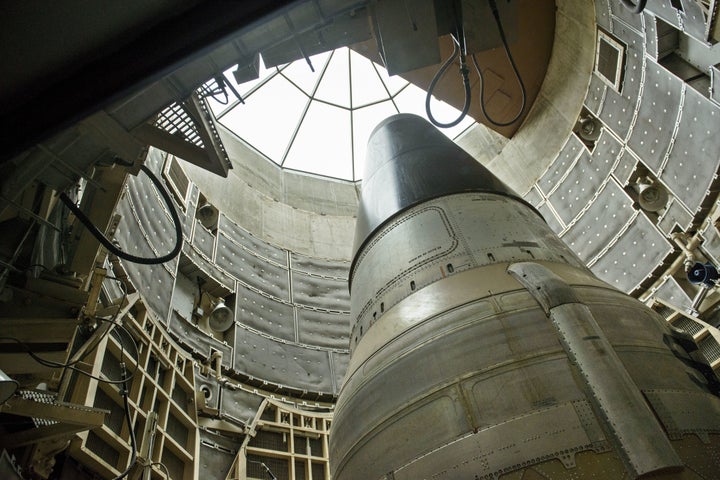
Sometime soon, President-elect Trump will be briefed on the American plan for nuclear war, including the role he plays in ordering a launch. John F. Kennedy was the first American president briefed on this plan, back in 1961. Afterwards, a shaken Kennedy told his secretary of state, Dean Rusk, “And we call ourselves the human race.”
President Nixon was similarly appalled. “No matter what we do,” he told his National Security Council, “they [the Soviets] lose their cities … what a decision.” Ninety million Soviets would die in an American nuclear strike, Nixon was told. And 90 million Americans would die in a Soviet retaliation. And there was no way to change that outcome.
Nixon tried. He ordered the Pentagon to develop flexible nuclear responses in an effort to allow the United States the ability to “limit” nuclear conflict. President Carter did the same. In the end, however, the “game theory” rationalizations of thermonuclear warfare left the nation’s leader faced with the reality of a Hobson’s choice, where the only solution offered was global destruction.
Ronald Reagan flirted with the notion of “winnable” nuclear war, before recognizing the reality that there was no way to put the nuclear genie back in the bottle once the first weapons were used. NATO was simply incapable of stopping a concerted Soviet drive on the Rhine; every tabletop exercise conducted by the generals responsible for the defense of Europe ended with a NATO nuclear weapon being employed to halt the Soviet Army ― and general nuclear war followed.
“Sometime soon, President-elect Trump will be briefed on the American plan for nuclear war,”
President Reagan’s response was to rebuild an American conventional military depleted by neglect in the aftermath of the Vietnam War, and to enter into serious nuclear disarmament negotiations with the Soviets, culminating in the elimination of two entire categories of nuclear weapons (short- and intermediate-range nuclear missiles) and meaningful reductions in strategic nuclear weapons. And for a moment, during discussions in Reykjavik, Iceland, Ronald Reagan and his Soviet counterpart, Mikhail Gorbachev, flirted with the total elimination of nuclear weapons, out of a mutual recognition by both leaders that nuclear war was unwinnable.
The collapse of the Soviet Union led to the emergence of the United States as the world’s sole remaining superpower. America did not prove to be a gracious victor in the Cold War, exploiting the weakness of post-Soviet Russia by expanding NATO into the former Soviet satellites of eastern Europe (including the three former Soviet Baltic republics of Lithuania, Latvia and Estonia) and transforming NATO from a defensive alliance to one that conducted offensive operations inside Europe (in Kosovo and Yugoslavia) and out (in Afghanistan and Libya.)
The United States also withdrew from the 1972 anti-ballistic missile treaty, a cornerstone of U.S.-Soviet arms control, leading to the subsequent deployment of American anti-missile capability onto European soil, and a halt to meaningful nuclear arms reduction talks between Russia and the United States (the so-called “New START” treaty negotiated by the Obama administration with Russia is little more than a front for nuclear modernization, with little or no reduction in actual nuclear war-fighting capability on either side).
Moreover, the American nuclear war plan had, void of a Soviet nuclear counter and with little or no respect for the remaining Russian nuclear capability, once again embraced the notion of “limited” or “containable” nuclear conflict, making the once unthinkable an active component of American strategic consideration, including preemptive use of nuclear weapons in a non-nuclear scenario.

The geopolitical situation President-elect Trump will inherit from President Obama is fraught with friction with Russia that, more so today than at any time since the end of the Cold War, has the potential of leading to military conflict. American and Russian forces operate face-to-face in the Baltics. The deteriorating situation in the Ukraine has led to a series of tense confrontations between the U.S. and Russia in the Black Sea region.
In Syria, there is active discussion within the Obama administration to engage in specific military acts ― the enforcement of a no-fly zone, the deliberate targeting of Syrian military forces ― that would inevitably lead to a shooting war with Russia. And Vice President Biden has publicly endorsed the kind of offensive cyber-attack against Russia (ostensibly in retaliation against unproven allegations of Russian involvement in the hacking of the Democratic National Committee e-mails) that, in and of itself, would constitute an act of war.
Donald Trump was openly mocked during the presidential campaign for his lack of precise knowledge regarding the American triad of nuclear capability ― land-based missiles, manned bombers and submarine-launched missiles. In the current environment, however, ignorance may be bliss. Successive American presidential administrations have shown themselves trapped by the allure of nuclear weapons. The triad, born of historical contingencies more than strategic need, is a relic of the Cold War that serves no meaningful purpose today other than to expose the United States, and by extension the rest of the world, to the imminence of nuclear destruction. Viable nuclear deterrence is not dependent on the retention of the triad. And yet the Obama administration has embarked on a trillion-dollar nuclear modernization of the triad, even as it gives lip service to the theory of nuclear disarmament.
President-elect Trump has indicated that he is open to improving relations between Russia and the United States. History has presented him with an opportunity to have a Reagan-like moment, where he could walk the United States away from the precipice of nuclear conflict by entering into meaningful disarmament negotiations with Russia, inclusive of putting the triad on the table (especially land-based missiles, which serve no viable purpose), and using the savings derived from such to rebuild America’s depleted conventional military capability.
The first reduces the potential for devastating nuclear war; the other creates a deterrent to potential miscalculations by any nation doubting American resolve to protect its interests and those of its allies. Both would serve to stabilize and secure America’s position in a post-Obama world.

